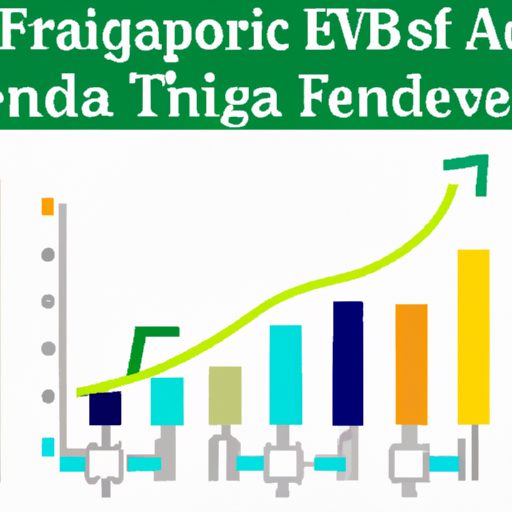The field-programmable gate array (FPGA) evaluation board industry is constantly evolving, with new trends emerging to meet the demands of designers and developers looking to create innovative solutions using FPGA technology. These evaluation boards serve as a platform for testing and prototyping FPGA designs, allowing users to experiment with different configurations and functionalities before moving on to full-scale production.

Another trend in the FPGA evaluation board industry is the growing popularity of boards that support open-source development tools and frameworks. Open-source tools provide designers with greater flexibility and control over their FPGA designs, allowing them to customize and optimize their projects to meet specific requirements. This trend has led to the development of evaluation boards that are compatible with popular open-source tools such as the Xilinx Vivado Design Suite and the Intel Quartus Prime software.
In addition to performance and flexibility, cost-effectiveness is also a key consideration for designers when choosing an FPGA evaluation board. As FPGA technology becomes more accessible and affordable, there is a growing demand for evaluation boards that offer a balance between performance and cost. Manufacturers are responding to this trend by developing boards that provide a high level of functionality at a competitive price point, making FPGA technology more accessible to a wider range of users.
Another trend in the FPGA evaluation board industry is the integration of artificial intelligence (AI) and machine learning (ML) capabilities. With the increasing demand for AI and ML applications in various industries, there is a growing need for evaluation boards that can support these advanced technologies. Manufacturers are developing boards with specialized hardware accelerators and optimized architectures to support AI and ML algorithms, enabling designers to create high-performance solutions for applications such as image recognition, natural language processing, and autonomous driving.
The rise of the Internet of Things (IoT) is also driving trends in the FPGA evaluation board industry. With the proliferation of connected devices and sensors, there is a growing demand for evaluation boards that can support IoT applications. Manufacturers are developing boards with integrated wireless connectivity options such as Wi-Fi, Bluetooth, and LoRa, enabling designers to create IoT solutions that can communicate with other devices and cloud services.
Security is another important trend in the FPGA evaluation board industry, as designers look for ways to protect their designs and data from unauthorized access and tampering. Manufacturers are developing boards with built-in security features such as secure boot mechanisms, encryption capabilities, and hardware-based security modules to ensure the integrity and confidentiality of FPGA designs.
Overall, the FPGA evaluation board industry is experiencing rapid growth and innovation, driven by the increasing demand for high-performance, flexible, cost-effective, and secure solutions. As FPGA technology continues to advance, we can expect to see further developments in evaluation boards that support emerging technologies such as AI, IoT, and security, enabling designers to create cutting-edge solutions for a wide range of applications.
The field-programmable gate array (FPGA) evaluation board industry is constantly evolving, with new trends emerging to meet the demands of designers and developers looking to create innovative solutions using FPGA technology. These evaluation boards serve as a platform for testing and prototyping FPGA designs, allowing users to experiment with different configurations and functionalities before moving on to full-scale production.

Another trend in the FPGA evaluation board industry is the growing popularity of boards that support open-source development tools and frameworks. Open-source tools provide designers with greater flexibility and control over their FPGA designs, allowing them to customize and optimize their projects to meet specific requirements. This trend has led to the development of evaluation boards that are compatible with popular open-source tools such as the Xilinx Vivado Design Suite and the Intel Quartus Prime software.
In addition to performance and flexibility, cost-effectiveness is also a key consideration for designers when choosing an FPGA evaluation board. As FPGA technology becomes more accessible and affordable, there is a growing demand for evaluation boards that offer a balance between performance and cost. Manufacturers are responding to this trend by developing boards that provide a high level of functionality at a competitive price point, making FPGA technology more accessible to a wider range of users.
Another trend in the FPGA evaluation board industry is the integration of artificial intelligence (AI) and machine learning (ML) capabilities. With the increasing demand for AI and ML applications in various industries, there is a growing need for evaluation boards that can support these advanced technologies. Manufacturers are developing boards with specialized hardware accelerators and optimized architectures to support AI and ML algorithms, enabling designers to create high-performance solutions for applications such as image recognition, natural language processing, and autonomous driving.
The rise of the Internet of Things (IoT) is also driving trends in the FPGA evaluation board industry. With the proliferation of connected devices and sensors, there is a growing demand for evaluation boards that can support IoT applications. Manufacturers are developing boards with integrated wireless connectivity options such as Wi-Fi, Bluetooth, and LoRa, enabling designers to create IoT solutions that can communicate with other devices and cloud services.
Security is another important trend in the FPGA evaluation board industry, as designers look for ways to protect their designs and data from unauthorized access and tampering. Manufacturers are developing boards with built-in security features such as secure boot mechanisms, encryption capabilities, and hardware-based security modules to ensure the integrity and confidentiality of FPGA designs.
Overall, the FPGA evaluation board industry is experiencing rapid growth and innovation, driven by the increasing demand for high-performance, flexible, cost-effective, and secure solutions. As FPGA technology continues to advance, we can expect to see further developments in evaluation boards that support emerging technologies such as AI, IoT, and security, enabling designers to create cutting-edge solutions for a wide range of applications.